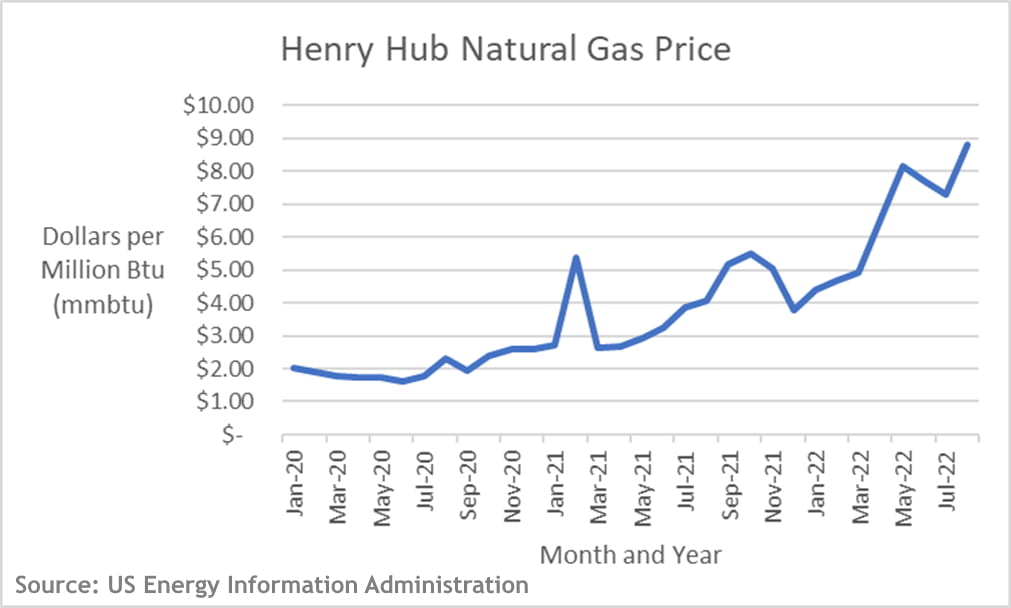Nate Bruce, Farm Business Management Specialist, nsbruce@udel.edu
Fertilizer expenses, particularly nitrogen fertilizers, were substantially higher this growing season than in years past. Many different factors were in play such as shortages, logistical problems, and Covid 19. One of the most significant factors that contributed to this growing season’s nitrogen fertilizer price increase was the price of natural gas. Natural gas is a key input for urea and ammonia fertilizers. The price of natural gas has steadily risen over the past year, with a rapid increase occurring after the Russian-Ukrainian War commenced. Below is a graph that shows the Henry Hub spot price for natural gas in dollars per million btu (mmbtu).

Russia is a major natural gas supplier to Europe and has cut supplies to Europe. Today, natural gas is trading at $7.29 / mmbtu after falling from a high of $8.81 / mmbtu in August. The last time the price of natural gas was greater than $7.00 / mmbtu was in September 2008. Although the natural gas market is volatile, there is much uncertainty in Europe right now as the winter months are fast approaching. The price of natural gas price over the coming months could give some insight into where nitrogen fertilizer will be in the spring. As producers think about nitrogen fertilizer usage for 2023, it should be noted that some price increases are already occurring. These nitrogen price increases can be attributed not only to natural gas, but also tariffs, logistical issues, and even the high price of corn. Expect volatility going into 2023.
